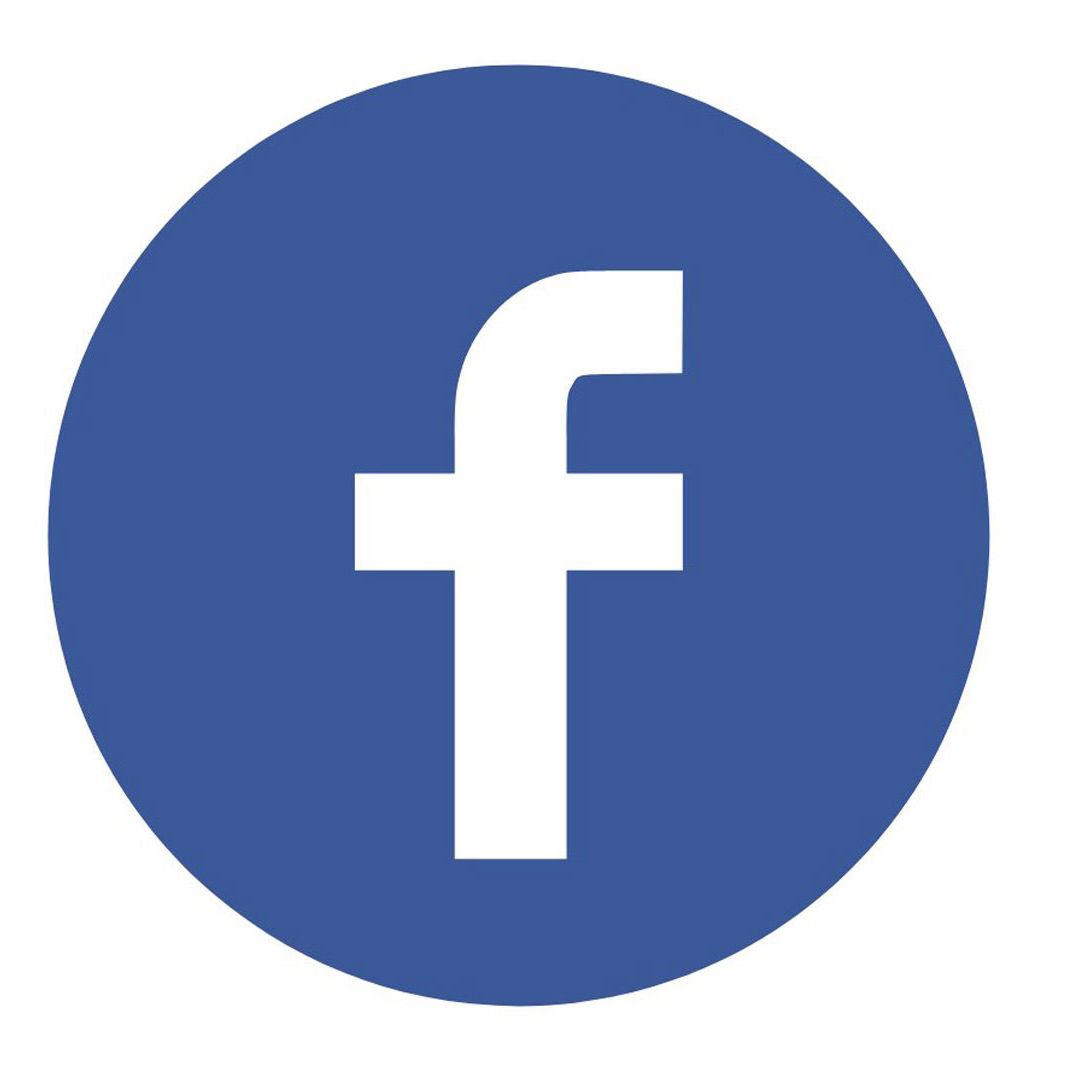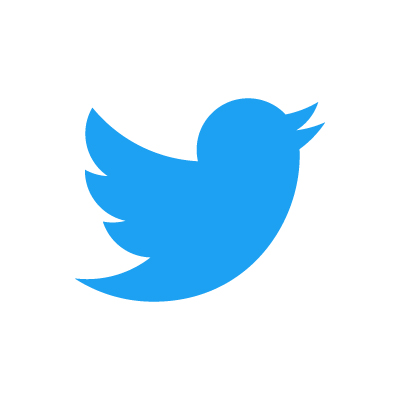Spring Pre-Trip Newsletter
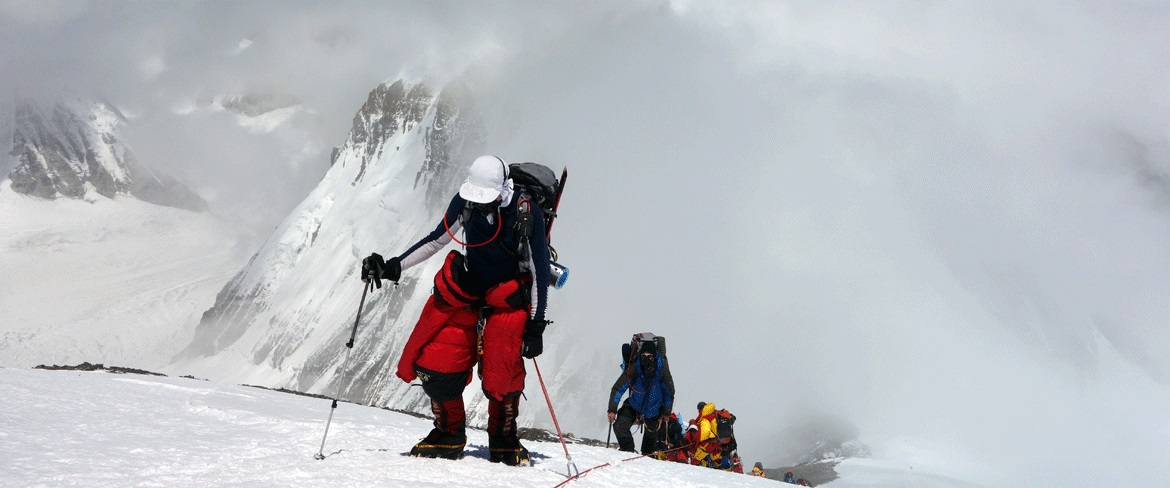
Dear Friends, Climbers and Trekkers,
This is the pre-trip newsletter for our 2023 expeditions and treks. How has 2023 been for you so far? I hope you are preparing for the mountains, staying fit, walking and climbing in your local hills, not working too hard and spending time with family, friends and colleagues.
We send this pre-trip newsletter to you in case you are already a member, are still thinking of joining, or wish to read about how we conduct our expeditions and walks. Thanks in advance for telling all of your friends and colleagues about what we are trying to do, and please recall we pay you or anyone you choose a 5% cash commission when you refer your friends.
Let us join together with a friendly team of men and women of all ages and abilities from around the world for safe fun and adventure in the mountains.
Please read down all of the way to the bottom of this newsletter so you do not miss anything important. Thank you very much and welcome to our team!
A) Introduction
B) Covid guidelines
C) Organizing your Nepal Visa
D) Preparation - what to bring
E) In Kathmandu (KTM) - arrival and departure
F) Equipment and supplies for walking and climbing
G) Sherpas and staff
H) Communication
I) Additional information for climbers
J) Donations of medical and educational supplies, clothing, etcetera for the Mount Everest Foundation for Sustainable Development
K) Conclusion
A: INTRODUCTION
We offer a number of exciting trips this year and next, which you may review on our website at www.SummitClimb.com and www.SummitTrek.com . Please ask as many questions as possible, so that we may understand one another's expectations. Informed team members achieve their goals with greater satisfactionand are better and safer "team players". We love discussing our favourite subject, MOUNTAINS, so please ask us anything.
NOW IS THE TIME TO JOIN OUR 2023 TRIPS if you have not already.
All climbs now feature western leaders, excellent food, the best Sherpas, and some of the finest equipment on the mountain.If you are considering joining (we hope you will) please be sure to read this newsletter to the end and understand it fully. Thank you.
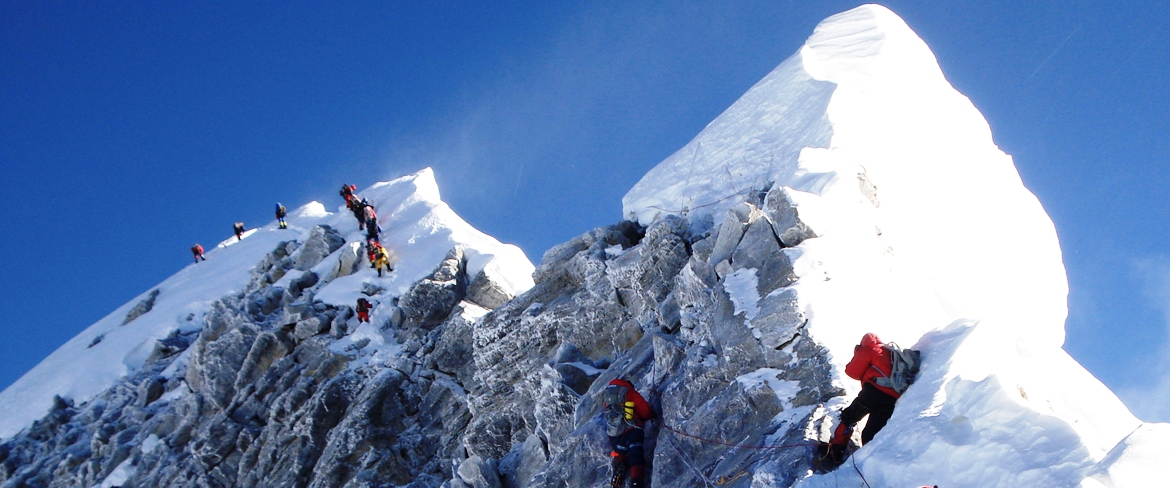
The three goals for our expeditions and walks are:
1. Safety;
2. Fun, Friendship, and Teamwork;
3. Achieving our goals, reaching the summit or basecamp and returningsafely.
B: ORGANIZING YOUR NEPAL VISA
YOUR NEPAL VISA IS BEST PURCHASED WHEN YOU ARRIVE AT THE KATHMANDU AIRPORT
When you arrive in Kathmandu airport, you will fill out the arrival and visa form using the electronic kiosk machine, take a picture of the final screen with your smartphone or digital camera (be sure your battery is already charged), and then the immigration officials will stamp your Nepal visa into your passport at the immigration counter. You will provide your passport sized photo of your face on a white background, and pay cash (dollars, pounds, or euros) for the visa at that time. The cost for a 90 day visa is around $100. Please obtain a single entry visa for the total number of days you will be in Nepal. Your passport must be valid for at least 6 months from the END of the expedition and contain at least 2 blank pages.
C: Preparation - what to remember. Please read the section below carefully. Thank you.
1) Purchase your flight ticket now. Flights are still available. Please let us know if you need assistance in booking your ticket. We are here to help.
2) Application paperwork and payment - what we need in your file, which we encourage you to send us by email. Now is the time for the completion of registration formalities, if you have not done so already.
Delay in receipt of the following items listed below may result in an inability to get you onto the permit and perhaps even a delay of your departure from Kathmandu.
Here is a checklist of what we need to have in your file immediately. If you have not already sent these, please do. We encourage you to send an electronic scan of all of the below documents, please be sure they are signed. Thank you:
[ ] Completed Payment. Please restate payments you made and what those payments were for, ie full vs basic, sherpas, oxygen, etc.
[ ] Make your Oxygen order (if any) crystal clear at this time, number of bottles, masks, payment, etc.
[ ] Make your Sherpa order (if any) crystal clear at this time, personal sherpa, quarter sherpa (equipment carriage service), payment, etc.
[ ] Signed and Scanned Trip Registration and Waiver Forms (4 page form).
[ ] Signed Medical Form (last page of 4 page form).
[ ]1 close up photo scan of your face, on white background,
[ ] Scan of passport identification pages.
[ ] Complete flight itinerary.
[ ] A letter saying you have travel medical insurance which covers Covid-19 (minimum $5000). This letter won’t be thoroughly checked. If you are not sure how to get this letter we will help you.
[ ]Helicopter rescue insurance covering you during trek and mountain climb(cancellation insurance is advised).
[ ] Doctors letter for all climbs 6000m / 19,500ft and above. Please request the template from us.
[ ] After obtaining your PCR negative report you will complete an online government of Nepal form called the CCMC Bar code. We will help you fill up the form and you will print out the form and barcode on paper and carry it with you during your flight to Nepal.
[ ] Your airlines may have other forms which are required to board your flight to Nepal. Please check.
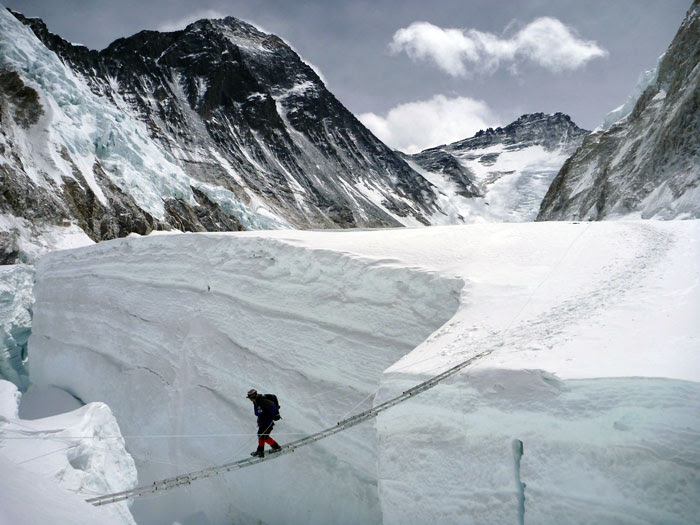
Please do let us know what further questions you may have about the registration process, or anything else for that matter. Thank you.
3) Please bringall of your personal paperwork mentioned above, and please remember to carry at least two extra paper photos in your pocket, of your face on a white background.
4) Please make sure to budget enough cash and bring it along with you to Kathmandu. For Nepal treks and climbs, you will change money into rupees after arriving in Kathmandu city. Although it is a good idea to change a bit at the airport (maybe $20, 10 pounds, or 10 euros). Credit cards are of little use once you leave Kathmandu, and even in Kathmandu credit cards are still quite often not accepted by shops, hotels, and restaurants. You can use your bank ATM card in Kathmandu. There are cash machines that sometimes work in Lukla and Namche. You will only be able to withdraw Nepalese rupees and not dollars, euros, pounds, etc. Once you are away from Kathmandu out on the trek, you may not be able to obtain any cash and sometimes it’s hard to change money other than US dollars, etcetera. If you do try to change money while trekking, you will receive a bad rate. In Kathmandu you can change many kinds of foreign currency from many countries at the best exchange rate. We've found it's better to be prepared and bring too much cash than not enough. Note on traveller's cheques: They are not useful. Please do not bring them. Regarding the size of the foreign currency bills. Large bills are good. Please don’t bring too many small bills, as you will get a worse exchange rate. A few small bills are ok. Please bring enough cash to cover your expenses for the following:
- A. Hotels in Kathmandu (KTM);
- B. Restaurants in KTM;
- C. Gear purchase, gear rental, and souvenir shopping in KTM;
- D. Visas;
- E. Emergency cash for rescue;
- F. Tips for staff, sherpas, summit bonuses, etc;
- G. Shopping and drinks (coke, beer, etcetera) during trek.
- H. Phone calls and internet charges.
- I. Extra Costs at lodges along the trek, like chocolate cake, cappuccino, battery charging, showers, laundry, etc.
- J. Helicopter flights when you are not sick, so can’t use your insurance, but don’t want to trek and would rather fly (these flights are becoming more affordable and more popular with our members).
If you feel uncomfortable carrying such currency on your trip, you can give it to our leader for safe keeping. Here are the recommended amounts of cash to have on hand for each trip:
- Everest Nepal members: please bring at least $1800 cash with you for the expedition.
- Lhotse members: please bring at least $1800 cash with you for the expedition.
- Everest Nepal Training Climb members: please bring at least $1000 cash with you for the trip.
- Everest Prep Climb (Island Peak + Lobuche) members: please bring at least $900 cash with you for the trip.
- Everest Glacier School members: please bring at least $700 cash with you for the trip.
- Everest Basecamp Nepal trekkers: please bring at least $400 cash with you for the trip.
Be sure to bring extra cash to Nepal basecamp for tipping the Sherpas and staff as many of them will not be returning to KTM. $, £, €, work well in Kathmandu. For Nepal walks and climbs, you will change money into rupees after arriving in Kathmandu
5) We need the name and contact details of an emergency contact person who is available 24 hours a day, speaks English, and is able to wire funds to Nepal on your behalf. This is in case you are injured and require emergency services. Thank you.
D: In Kathmandu (KTM) - arrival and departure
1) Arriving in KTM, meeting your flight, and going to your hotel.
Use hand sanitiser regularly, when entering any building, before starting an activity and as often as possible throughout the activity. Social distance as much as possible and where not possible wear a mask, especially indoors.
It is the member’s responsibility to comply with Covid-19 precautions
Upon arrival at Kathmandu airport, medical staff will check to see if you have a fever, if your temperature is high then you will have to self-isolate or be admitted to the hospital. Other medical tests/procedures may be required.
Note: Our staff will meet you at the airport holding a "SummitClimb or SummitTrek" sign.
Our staff personally meet your flight at the Kathmandu airport and bring you to the hotel. We were able to meet all of our team members last season. Do we have your exact arrival (and departure) information, including: airline, flight number, arrival date, arrival time, coming from where? If you have sent the above, thank you very much. Before leaving the airport please change a little money (maybe $20, 10 pounds, or 10 euros) into rupees at the exchange counter. You will get a better rate once you are inside Kathmandu, so please don’t change too much. When you walk out of the airport terminal, please walk slowly and carefully and look for the sign bearing your name (usually your last, or surname, but occasionally your first, or given name). The sign may also simply say "Summit Climb or Summit Trek". In case we miss you, please take a 1000 rupee taxi to the hotel. We did not miss anyone last year, but occasionally some members do not read the signs.
All members of all teams are urgently instructed to never tip more than $1 or 1 euro or 1 pound or 100 rupees at the airport in exchange for receiving help with your luggage. These airport people are becoming really persistent and expect that visitors will not know any better. Sometimes they ask for huge amounts of money and people give it to them, so please be aware and cautious when you arrive. Please also note that if 10 people try to carry your bag, they don’t all receive a tip. You just give the money to one of them and let them divide it among themselves.
2) Print out our KTM office details and carry with you at all times. Our Kathmandu office managers are:Climbing & Trekking Office -
- Mr. Murari Sharma and Mr. Deha Shrestha
- Everest Parivar Expedition (Infront of Armed Police Force Headquarter)
- Ring Road, Halchok, Swayambhu, Kathmandu, Nepal
- Office: 977-1-4283382
- Residence tel: 9771-4418210, 4428110
- Mobile: (977) 9851023985 or 9851091456
PLEASE PRINT OUT &CARRY WITH YOU AT ALL TIMES (ESPECIALLY ON ARRIVAL) IN CASE YOU BECOME LOST
3) KTM HOTEL. Your trip includes 2 FREE/NO CHARGE Kathmandu standard hotel nights at the beginning and two free Kathmandu standard hotel nights at the end of the trip. If you prefer a 5 star hotel, we can offer the famous Yak and Yeti.
Standard hotel in Kathmandu. Four nights are included for FREE, 2 at the beginning and 2 at the end.
We are able to book standard hotel extra nights if you wish to arrive earlier than the trip start date or stay later then the trip end date. Cost: $30/night.
Here is the information for the standard hotel we are using this year:
- Harati Manor Inn
- 569 Gangalal Marg,
- Chhetrapati, Thamel
- Kathmandu Nepal
- Tel: 4263429, 4261067
- Cell: 9841230040
5 Star Hotel (famous Yak and Yeti Hotel with amazing lobby, large garden, beautiful rooms, delicious food, health club, etc) Price: $150/night
Here is the information for the 5 star hotel:
- Yak and Yeti Hotel
- Durbar Marg,
- Kathmandu
- +977 1-42489994
4) Arrive in KTM on the first day of our itinerary for the team orientation. All members must be present on the first day of our scheduled itinerary in Kathmandu unless you have made special arrangements. We need your passports on that day so that we can obtain the permit for you to go to the mountains. We will do an intensive orientation, training, and shopping before setting off for the mountains the next day. It’s fine if you want to arrive earlier, and definitely a good idea if you have lots of shopping to do. Below are the dates we require you to arrive in Kathmandu (of course it is no problem to arrive earlier). If you need to arrive later, please contact the leader, thanks.
- Everest Nepal: 7 April.
- Lhotse: 7 April.
- Everest Nepal Training Climb: 7 April
- Everest Quick Prep Climb (Island Peak + Lobuche): 3 February
- Everest Glacier School/Lobuche: 7 April
- Island Peak: 7April
- Everest Base Camp Trek Nepal (and optional Island Peak): 7April.
5) Please don’t plan on leaving before the last day of our itinerary. We need you to stay until the last day of the expedition. Please note that you cannot leave before the end date of the trip unless you have the leaders permission. Of course its fine if you want to stay on after the expedition ends. There are lots of fun things to do in Nepal like wild game viewing safaris, rafting, visit lakeside in Pokhara, etcetera.Below are the dates for your return flight home at the end of each expedition. If you already know you need to depart earlier, please contact the leader, thanks.
- Everest: 5 June
- Lhotse: 5 June
- Everest Nepal Training Climb: 7 May
- Everest Quick Prep Climb (Island Peak + Lobuche): 22 February
- Everest Glacier School: 24 April
- Island Peak: 28 April
- Everest Base Camp Trek Nepal: 23 April
E: Equipment -
1) For an equipment list for climbing, trekking and group equipment, please go to the 'equipment' link foreach trip you are interested in. PLEASE NOTE: all equipment MUST be in a locked duffle bag, kit bag, hold-all bag with your name in LARGE LETTERS. Unlocked rucksacks and unlocked bags of any kind are not allowed on yaks, porters and flights to Lukla. You can buy an inexpensive duffle bag in Kathmandu for $20.00 and a lock for .50 cents.
2) Shopping in KTM. We provide an equipment purchase and rent/hire service to check your gear and offer free ideas of where to find the best climbing equipment, clothing, shoes, sleeping bags, etcetera for your expedition. Give us a call or email and we will be glad to help. Equipment purchase and hire/renting is simple, easy and affordable here in Kathmandu! We have access to the finest brands and the best quality gear at rock bottom prices. Also, we provide personal gear checking of all of your equipment in Kathmandu. Please bring the gear you have and we will check it and help you find any missing pieces, make sure it fits correctly, and is the best quality for you. Even if you have no gear, please just let us know and we will find every single piece for you. With more than 100 high quality and affordable equipment shops here in Kathmandu, we can find any item you might need. Please just let us know your sizes in advance and we will give you a list of options, and assure you of availability.
3) Storing excess baggage and personal possessions - valuables in KTM. We provide secure facilities in Kathmandu in which to store your extra personal items such as luggage, extra money, credit cards, passports, jewelry, expensive watches, etcetera. These facilities are kept locked and are extremely safe. All bags left in storage must be locked and have your name clearly written in large letters. If you need a small locking bag/hold all for storage, you can buy a good one in Kathmandu for $10.00 and a lock for 0.50 cents.
4) Climbers and walkers-bring, buy or rent a thick hooded duvet-down jacket. Climbers also need duvet down pants –trousers and/or a down suit. Good quality down/duvet gear is available for rent or purchase in Kathmandu inexpensively and is a crucial part of your equipment.
5) Food during the expedition - Snack Food: Bring your own sports energy snack food and/or drinks. All basecamp and trek meals and high meals (3 per day) are included in our full-service expeditions. We provide all meals on trek and more than enough food and cooking fuel for three meals per day on the high mountain. We do not provide any daily sports energy snack energy food, you need to provide your own. Please remember to bring your daily snack-sports energy mountain food for each day we are climbing above basecamp on the mountain. This food would consist of chocolate bars, power bars, energy gel, rehydration drinking powder, sweets, nuts, sausage, cheese, biscuits, cookies,etc.. More and more items are available in Kathmandu. A wide variety of imported sweets, biscuits, cookies, Pringles, crisps, snacks, and chocolates are available, with quality brands such as Cadbury, Snickers, Pringles, Lays, Walker’s Shortbread, Lindt and Cafe d'Or in abundance. The prices are not bad. There are many kinds of local snacks and powerbars available in Kathmandu, but they still do not import foreign power bars, energy gel, powdered sports drinks, etcetera.
If you like imported cheeses and sausages, and other specialty foods, please bring them.
Here is the list of food we suggest you bring for yourself:
- Everest: 3-6 kilos - 7 to 13 pounds of snacks and at least 5 freeze-dried dinners
- Lhotse: 3-6 kilos - 7 to 13 pounds of snacks and at least 5 freeze-dried dinners
- Everest Training Climbs: 2-4 kilos - 4 to 8 pounds of snacks and at least 2 freeze-dried dinners
- Everest Quick Prep Climb (Island Peak + Lobuche): 1-2 kilos - 2 to 4 pounds of snacks and 2 freeze-dried dinners
- Everest Glacier School & Island Peak: 1-2 kilos - 2 to 4 pounds of snacks
- Everest Basecamp Trek: 1-2 kilos - 2 to 4 pounds of snacks
6) Boots and shoes for your climb - trek. Regarding shoes, please wear the following:
- Everest: "One-Sport Everest Millet" style boots high on the mountain and sturdy, lightweight leather boots for walking to camp ABC.
- Lhotse: "One-Sport Everest Millet" stlye boots high on the mountain and sturdy, lightweight leather boots for walking to camp 1.
- Everest Training Climbs: Plastic double boots, super warm specialty insulated single boots, or "One-Sport Everest Millet" boots. Sturdy, lightweight leather boots for walking to basecamp.
- Everest Quick Prep Climb (Island Peak + Lobuche):Sturdy double plastic climbing boots that are made for crampons, in addition to comfortable lightweight walking shoes with good ankle support that are water repellent and well “broken-in.”.
- Everest Glacier School & Island Peak: Sturdy double plastic climbing boots that are made for crampons, in addition to comfortable lightweight walking shoes with good ankle support that are water repellent and well “broken-in.”.
- Everest Basecamp Treks: Comfortable lightweight walking shoes with good ankle support that are water repellent and well “broken-in.”
Please note: Members who have tried to wear leather single boots to the summit of our 7000 metre / 23,000 foot plus climbing peaks have suffered frostbite. Single boots are not recommended, and may disqualify you from climbing 7000 metre / 23,000 foot plus climbing peaks. Frostbite is not an option on our expeditions.
Good shoes and all types of climbing boots are available for purchase and rent/hire inexpensively in Kathmandu. Our planned schedule allows plenty of time for equipment shopping in Kathmandu. Let us know your size and we are glad to check for you! IF YOU HAVE VERY SMALL (-38) OR VERY LARGE FEET (+46), PLEASE TELL US BEFORE, AND WE WILL CHECK THE KATHMANDU SHOPS FOR AVAILABILITY.
F: Sherpas and staff
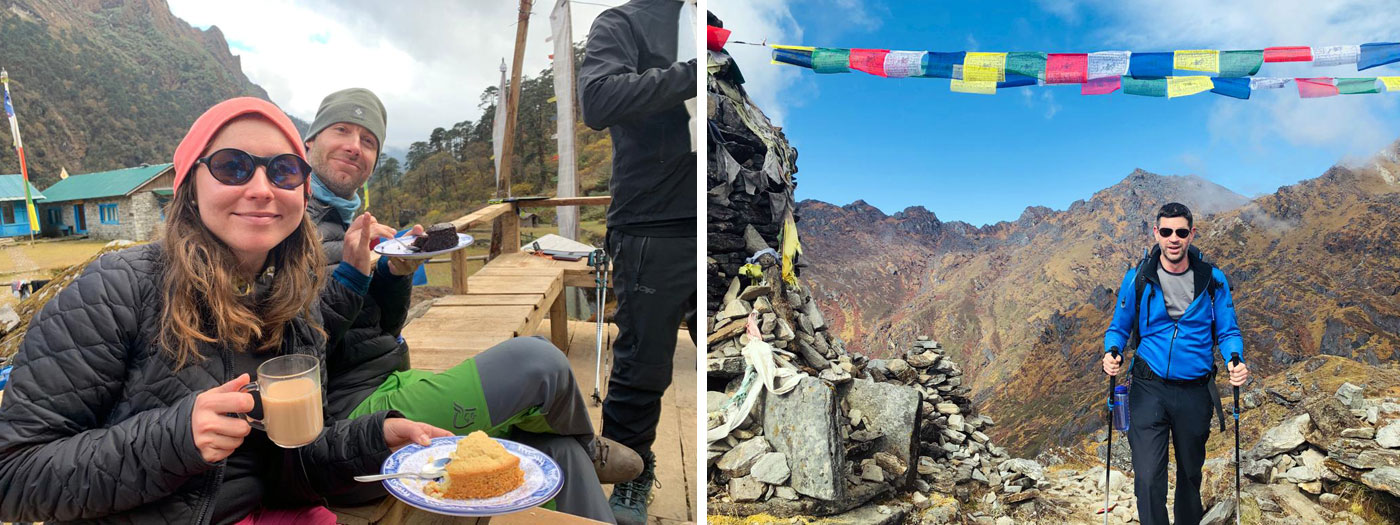
Tipping your leaders, Sherpas, and staff. Regarding gratuities (tips). Our leaders, sherpas, and staff are among the best, because they can count on receiving gratuities for a job well done at the end of each expedition. You will be impressed when you see just how hard we do work. It is a matter of pride for all of us. Besides individual tips, we also ask you to pay an additional “group” tip and we will "pool" these tips together and then, as a group, we will vote on the distribution of the gratuities to the individual staff. This method has seemed to be the fairest and has worked very well in the past. In addition there will be a high-altitude bonus.
- Everest Group Tip: $350
- Lhotse Group Tip: $350
- Everest Training Climb Group Tip: $150
- Everest Quick Prep Climb (Island Peak + Lobuche) Group Tip: $150
- Everest Glacier School & Island Peak Group Tip: $100
- Everest Basecamp Treks & Remote Nepal Service Trek Group Tip: $150
Expect to pay the above tip no matter what.
Tipping Climbing Sherpas on our peak climbs: for a Sherpa who helps you to climb above the high camp or up to the summit and back down, expect to pay a summit-attempt bonus as follows:
- Everest Summit Attempt Bonus: $600, Summit Success: $1000.
- Lhotse Summit Attempt Bonus: $500, Summit Success: $800.
- Everest Nepal Training Climb Summit Attempt Bonus: $150, Summit Success: $250.
- Everest Quick Prep Climb (Island Peak + Lobuche) Summit Attempt Bonus: $100, Summit Success: $150.
- Everest Glacier School & Island Peak: Summit Attempt Bonus: $100, Summit Success: $150
The above amount of money may be split between climbers who were in the summit party. We request you to bring this money with you to basecamp in cash, and be ready to pay it there, as many of our staff are local and will not be returning to Kathmandu with us.
Bring gifts for Sherpas and staff. Regarding other gifts you may wish to provide, please bring as many as possible. These equipment donations are quite important to our staff and their families as they are often handed down to needy relatives and Sherpas who are learning to climb and need some assistance. Most, if not all Sherpas got their start on "hand-me-down" kit.
SHERPA TRAINING SCHOOL: Working together with the Mount Everest Foundation for Sustainable Development (MEFSD), we need new and used good-quality climbing and walking equipment and clothing, as well as funds for office expense. The MEFSD is building a new school for training 30 aspiring young Sherpas, both men and women. Safety, technique, communication, education, health, environmental and cultural preservation and economic opportunities will be the goals for this new training course so that we can provide education, training and help local people in Nepal to earn a good living from sustainable tourism in their beautiful country for many years to come.
Do you have extra mountain equipment, clothing, and shoes/boots? Older equipment, shoes, and clothing are fine. We encourage you to bring any extras for our staff. Please remember that Sherpa people come in all sizes (from extra small to extra large), and would appreciate any rucksacks, old harnesses, helmets, ice-axes, old ice and rock gear, warm clothing, goretex and fleece, pile, down, and duvet clothing, windproof clothing, and any kind of out-of-door shoes and boots, including walking, climbing, running, etc. Children’s and Women’s clothing are also needed. Thanks for helping and being so very thoughtful.
G: Communication
Telephone. We have a mobile phone in basecamp. The cost is around .03 cents to .50 cents per minute, depending on which country you are ringing andit’s free of cost to receive incoming calls and texts on the mobile phone.We plan to have access to mobile and satellite telephone during the trek too. Those wishing to use our satellite phones above basecamp are required to post a $100 deposit, prior to departure from Kathmandu. The cost for satellite phones is $4 per minute. Incoming calls are not possible.
Website News Updates: We often have a website where your family, friends, colleagues, and sponsors can watch the progress of our climbs and walks. This website is a public service from and . Once reaching the site please go to “recent news” and you will see the dispatches from your expedition. We have traditionally asked all members to become involved and to write or phone blogs - "dispatches" or reports about the progress of our expedition and also to post photos for the folks at home to see, during the expedition.
Please be sure to share our summitclimb and summittrek news sites and social media pages with all of your family, loved ones, friends and colleagues. Thanks!
Battery Charging: laptop, ipod, mp3 player, and/or digital camera. In the Khumbu Valley and in Kathmandu, be sure to bring your wall charger compatible to Kathmandu's 220 volt current (when its working). Also, we encourage you to bring your own smaller solar panel, as these seem to work very well.
- The lodges along the route do offer battery charging of all devices, including USB, 12 volt DC and also AC with your wall charger
- We do have solar charging in basecamp for usb and also 12 volt DC. However in basecamp we are unable to charge AC with your wall charger. However, if you have a removable battery in your device, we can easily charge it in basecamp.
Computer, ipod, mp3, camera note: Laptops work well up to about 4000 metres/13,000 feet. Altitude can destroy or wipe hard drives bigger than 7 - 10 GB above this altitude, or hard drives that have a moving disk. There are several options out on the market for laptops with solid state non moving hard drives that work well in altitude.
Wifi is often available in Kathmandu and often in the Khumbu.
Digital cameras work well. We recommend that you keep them in your jacket during the day and in your sleeping bag at night.
If you are thinking of bringing only your phone for photography, please be advised, their batteries often go dead/flat before you reach the summit = No Summit Picture.
Drones Are Not Allowed in Nepal without a special permit and a special government officer (expensive).
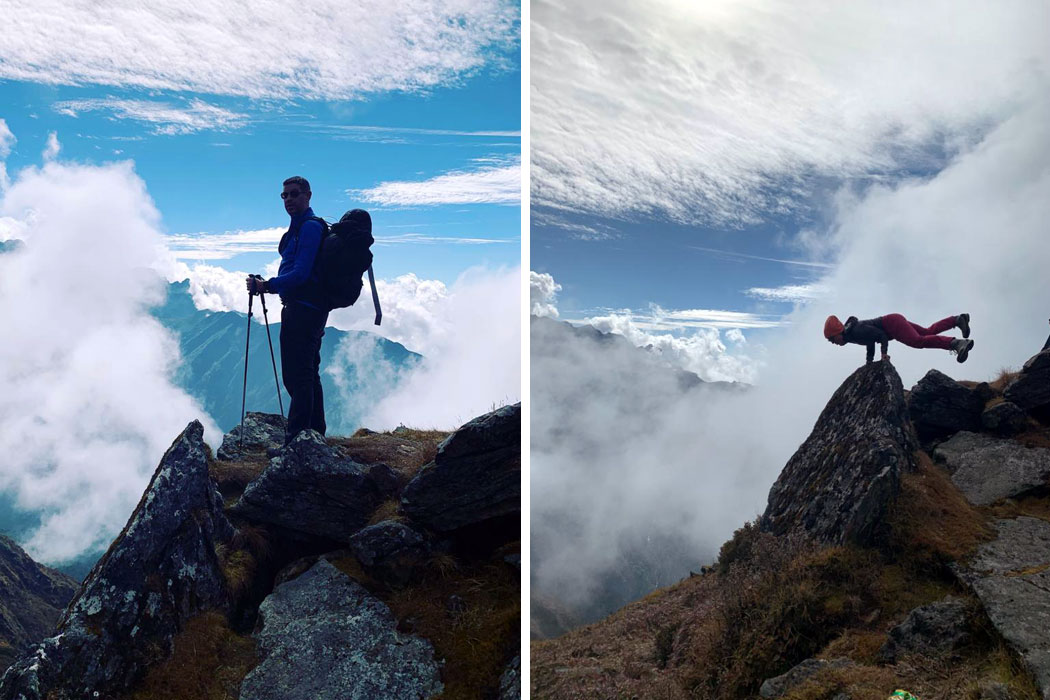
H: Additional information for climbers:
Bring or buy warm mittens. Mittens are much better than gloves. Special warm high-altitude mittens are necessary for all of our climbs, for example, the Outdoor Research Alti-Mitt. Nowadays, we can find many warm mitten choices in Kathmandu. You won't need to wear any liner gloves inside these mitts (they already have their own integral liner) so fit is very important. Be sure to discuss the size of your hand and what size mitt you might need with the person at the shop. Please don’t buy mitts which are too large. You won’t be able to grip the ropes and your ice axe, and they won’t keep you any warmer than properly fitting mitts.
Bring or buy a figure 8. Climbers, please be sure to bring a "figure 8" for rappelling/abseiling. Modern rock climbing descenders ie: "atc’s" do not work on icy and knotted fixed line, and are a liability because they slow you and the team down considerably. It is hard for some people to believe until they witness this personally, but we are asking you to believe it now. Please go out and purchase a figure 8. You may also purchase a figure 8 in Kathmandu.
I. Donations of medical and educational supplies, clothing, etcetera for the Mount Everest Foundation for Sustainable Development:
Please consider donating supplies, clothing, funds, building materials, solar equipment, etcetera, as well as your own time and efforts to the Mount Everest Foundation for Sustainable Development (MEFSD). Your donation will be used wisely by the Foundation which is involved in several projects, including the Mount Everest Biogas Project and the Sherpa First Responder Project. Additionally, MEFSD exists to help poor mountain Nepali families to help themselves. These families live in Nepal near Everest, but far from the tourist trail where life is very primitive, making Nepal the 20th poorest country in the world and the poorest country in all Asia. The foundation builds schools and hospitals and protects fragile environments and cultural assets. Please see what we have been doing with recent donations at www.MountEverestFoundation.org . We encourage you to become involved and we conduct service treks and volunteer projects you might wish to join.
Thank you so much for all of your kind compassion and wonderful help to the people of Nepal!!
J: Conclusion
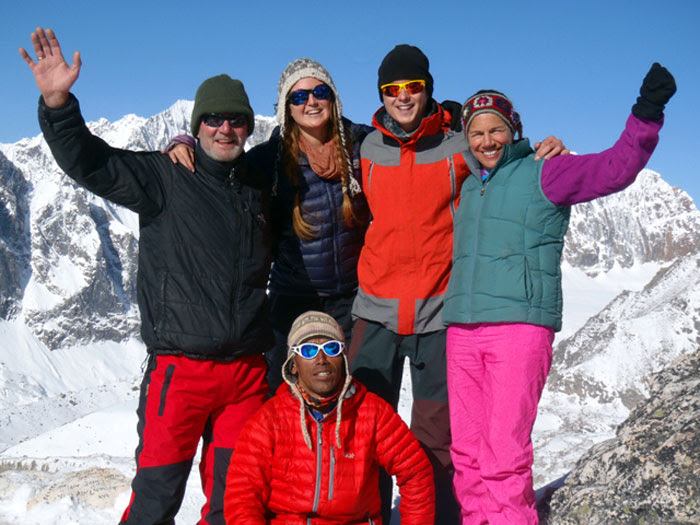
What have we forgotten? Please express yourself now, and communicate all of your thoughts, questions, and ideas. It is very important that we build another top team this year by working together, beginning today. We always enjoy discussing our favorite subject: MOUNTAINS. Also, this kind of conversation may help us to understand one another's expectations.
Let us begin climbing and walking. We are looking forward to further discussion, to meeting, to climbing and walking together, and to seeing you feeling well on the trek, in basecamp, the upper camps, on the summit, and on the way back down.
Thank you very much, Best Regards for now, Yours Sincerely, from Dan Mazur and all of us at www.SummitClimb.com and www.SummitTrek.com
Thanks for telling all of your friends about what we are trying to do.
Dan Mazur
Email: DanielMazur@SummitClimb.com,
- UK telephone: +44 (0)7810 375400 (evenings best, I may be out climbing in the day);
- US telephone: (+1)360-570-0715 (please leave a message in case I am out in the hills); Nepal phone: +9779841595504 and +9779828848201
- Text, SMS and WhatsApp: +13602503407.
- Facebook Messenger: www.facebook.com/danielleemazur
- Instagram Dan Mazur - / Instagram SummitClimb
- Web: www.SummitClimb.com and www.SummitTrek.com , email: info@SummitClimb.com


